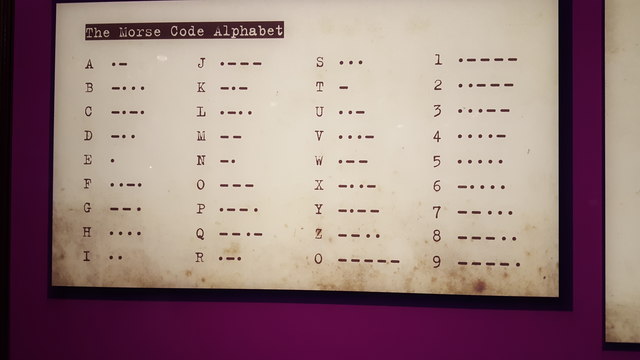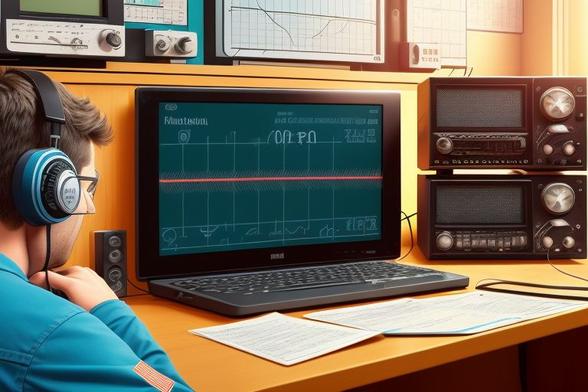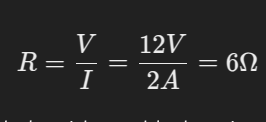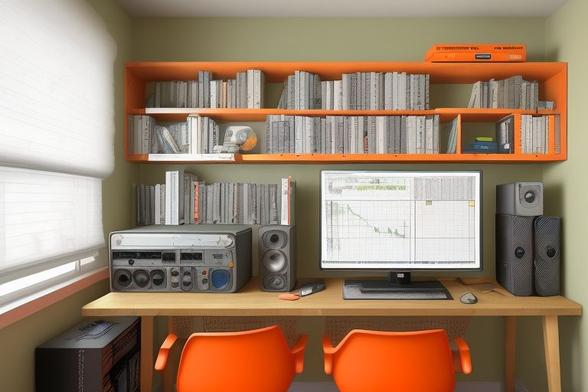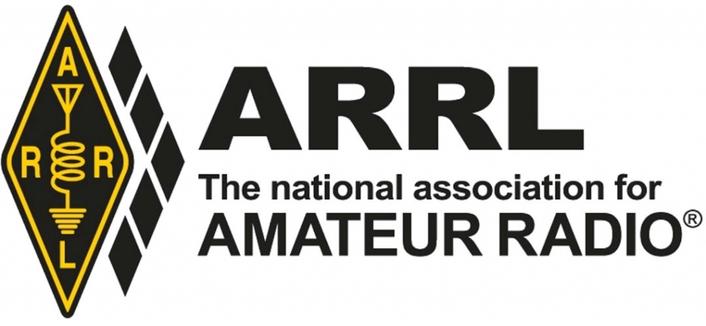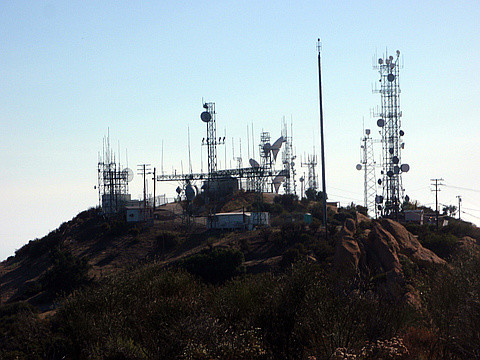#RadioCommunication #UHFVHF #Tech #CyberEvent #InfoSec
#RadioCommunication #UHFVHF #Tech #CyberEvent #InfoSec
Understanding Ham Radio Operating Modes: A Beginner’s Guide to SSB, CW, FM, and More
1,756 words, 9 minutes read time.
As you consider diving into the fascinating world of amateur radio, one of the most important areas to familiarize yourself with is the various operating modes used by ham operators. These modes define how signals are transmitted, which directly impacts the quality, reach, and efficiency of communication. In this guide, we’ll explore the most common ham radio operating modes, including Single Sideband (SSB), Continuous Wave (CW), Frequency Modulation (FM), and more. Understanding these modes will help you not only get a better grasp of how amateur radio works but also make you a more competent operator as you progress toward getting your ham radio license.
What Are Ham Radio Operating Modes?
Ham radio operating modes refer to the different ways a ham radio signal can be transmitted and received. Each mode has its own characteristics, advantages, and limitations, which affect the type of communication it is best suited for. Whether you’re communicating locally or across continents, choosing the right mode can make all the difference in the quality of your transmission. As a newcomer to ham radio, learning about these modes will help you choose the most suitable method for various communication scenarios. It’s a critical aspect of mastering the hobby and ensuring effective communication on the airwaves.
An Overview of the Common Ham Radio Operating Modes
Single Sideband (SSB) is one of the most popular modes used in amateur radio, particularly for long-distance communication. SSB is a type of amplitude modulation (AM) where only one sideband of the signal is transmitted, reducing the bandwidth and power requirements compared to traditional AM transmissions. This makes SSB particularly advantageous for communication over long distances, especially on the HF (High Frequency) bands.
In SSB, the carrier wave is suppressed, and only the upper or lower sideband is transmitted. This results in more efficient use of the frequency spectrum, allowing for clearer signals with less interference. Many ham radio operators prefer SSB for global communication because it’s capable of reaching farther distances with less power, which is important for operators who are working with limited equipment or those trying to make contacts in remote areas.
According to the ARRL (American Radio Relay League), SSB is particularly useful for DX (distance) communications. The frequencies used for SSB typically fall within the HF bands, and operators use SSB to make voice contacts, known as “phone” contacts. The convenience and efficiency of SSB have made it the go-to mode for many long-haul communications on the ham bands (source: ARRL – Ham Radio Modes).
Continuous Wave (CW) mode is a form of Morse code communication. In CW, a signal is transmitted as a series of on-off keying (dots and dashes), which represent letters and numbers in Morse code. While this may seem old-fashioned to some, CW remains one of the most effective modes for weak-signal communication, particularly under challenging conditions where voice transmissions might not be possible.
One of the biggest advantages of CW is its ability to operate effectively in low signal-to-noise conditions. The simple nature of the transmission makes it less susceptible to interference, and even very weak signals can be received and understood using CW. This mode is commonly used by operators seeking to make contacts in very distant locations, especially when there is a lot of atmospheric interference or in regions with poor propagation conditions.
CW is still widely used in ham radio today, especially for operators who are focused on maximizing their reach with minimal equipment and power. The ability to send Morse code manually or via automatic keyers gives CW a distinct appeal to those looking to hone their skills in a very traditional aspect of ham radio. In fact, many experienced ham radio operators swear by CW for its efficiency and ability to make reliable contacts even in adverse conditions (source: K7ON – CW and SSB Basics).
Frequency Modulation (FM) is another popular mode, particularly on VHF and UHF bands. Unlike AM or SSB, where the amplitude or frequency is varied, FM works by modulating the frequency of the carrier wave. This results in high-quality, noise-resistant signals that are well-suited for local communications. FM is the standard mode used by repeaters, which are devices that extend the reach of ham radio signals by retransmitting signals received from lower-power stations.
FM is especially favored for short-range communication, such as local contacts or communication with repeaters, and it is most commonly used in the 2-meter and 70-centimeter bands. FM’s primary advantage is its resilience to interference, making it perfect for urban areas where noise is more prevalent. The clear, voice-quality signal that FM provides makes it ideal for informal conversations or emergency communication within a local area.
One of the main advantages of FM is the fact that once the signal reaches a certain level, the sound quality doesn’t degrade much, even if the signal strength weakens. However, FM has a limited range compared to SSB or CW and typically isn’t used for long-distance communication. The quality and simplicity of FM make it ideal for casual use and for beginner ham radio operators who are starting to experiment with their radios (source: Ham Universe – Modes of Operation).
Digital modes have gained significant popularity in recent years due to advancements in technology and the ability to send information more efficiently. Digital modes, such as FT8, PSK31, and RTTY (Radio Teleprinter), use computer-generated signals to send and receive data. These modes can operate at very low power levels, which makes them perfect for weak signal propagation or for operators looking to maximize their battery life.
One of the most popular digital modes is FT8, a mode designed for weak-signal communication that allows operators to make contacts under extremely low signal-to-noise conditions. FT8 operates in narrow bandwidths, allowing multiple contacts to be made on a single frequency, even when propagation is poor. PSK31 is another widely used digital mode, particularly for keyboard-to-keyboard communications. It uses phase shift keying to transmit signals that can easily be decoded by a computer.
Digital modes are a fantastic way for new ham operators to make contacts with minimal power and without needing to master Morse code or voice communication. Digital signals are often more reliable in conditions where noise and interference would otherwise render voice or CW transmissions unusable. Many operators appreciate the challenge of fine-tuning digital signals and enjoy the flexibility that digital modes offer in terms of communication techniques and automation (source: eHam – Understanding SSB (Single Sideband)).
Although it is less commonly used today, Amplitude Modulation (AM) still holds a place in ham radio, especially among enthusiasts who enjoy experimenting with vintage equipment. AM is a form of modulation where the amplitude of the carrier wave is varied in accordance with the modulating signal, typically a voice or music signal. AM has a characteristic “wide” signal, which takes up more bandwidth compared to SSB. This can result in interference with other stations operating on the same frequency, which is one of the main reasons AM has fallen out of favor for general communication.
However, AM still has its applications, especially in certain historical contexts or for specialized communication, such as in aircraft communications or vintage radio operations. Some ham radio operators prefer to use AM for nostalgia’s sake, or they might enjoy operating within the AM portions of the bands, which can often be quieter and less crowded compared to the SSB portions. For those who enjoy the history and evolution of radio technology, operating in AM mode can be a fun and rewarding challenge (source: QRZ – Ham Radio Operating Modes).
Why Learning These Modes is Important for New Hams
As a new ham, understanding the various operating modes available will help you communicate more effectively and efficiently. It allows you to select the best mode for each situation, whether you’re trying to make a local contact on FM, reach across the globe using SSB, or send a weak signal over long distances with CW or digital modes. Furthermore, many modes are used during contests, emergency communications, and special events, so becoming proficient in multiple modes will enhance your overall ham radio experience.
In addition to improving your communication skills, learning different modes will also help you gain a deeper understanding of how radio waves propagate and how various factors such as power, frequency, and modulation affect signal transmission. This knowledge will not only make you a better operator but also help you troubleshoot and optimize your station setup for various conditions.
How to Get Started with These Modes
Getting started with different ham radio modes doesn’t require a lot of advanced equipment. Many beginners start with simple radios capable of operating in FM mode and gradually progress to more sophisticated transceivers that support SSB, CW, and digital modes. Local ham clubs are a great place to connect with experienced operators who can help you learn the basics of each mode.
Once you’re familiar with the theoretical aspects of ham radio modes, you can begin experimenting on air. Start by making simple local contacts on FM, and then try making longer-distance contacts using SSB. As you gain experience, you can explore CW or digital modes, which offer unique challenges and rewards.
Conclusion
Understanding the various operating modes of ham radio is essential for any new operator who wants to make the most of their hobby. Whether you’re communicating locally on FM or making global contacts with SSB or CW, each mode has its unique advantages and applications. By exploring these modes, you’ll not only enhance your communication skills but also deepen your appreciation for the technical side of amateur radio. So, dive in, experiment with different modes, and enjoy the world of ham radio communication!
D. Bryan King
Sources
- ARRL – Ham Radio Modes
- WB8WFK – Modes of Amateur Radio
- Ham Radio School – Understanding Ham Radio Modes
- QRZ – Ham Radio Operating Modes
- Ham Universe – Modes of Operation
- eHam – Understanding SSB (Single Sideband)
- Radio-Electronics – Radio Transmission Modes
- K7ON – CW and SSB Basics
- ARRL – Technician Class License Overview
- QRZCQ – Ham Radio Modes Explained
- UK Radio Scanning – HF Radio Modes
- Ham Hub – Types of Ham Radio Modes
- Radio Toolbox – Understanding CW Mode
- W5YI – Operating Modes in Amateur Radio
- Amateur Radio – SSB vs CW vs Digital Modes
Disclaimer:
The views and opinions expressed in this post are solely those of the author. The information provided is based on personal research, experience, and understanding of the subject matter at the time of writing. Readers should consult relevant experts or authorities for specific guidance related to their unique situations.
Related Posts
Rate this:
#AmateurRadio #amateurRadioCommunity #amateurRadioEquipment #amateurRadioLicense #beginnerHamRadio #CW #CWMode #digitalCommunicationModes #digitalModes #FM #frequencyModulation #FT8 #globalCommunication #hamOperators #hamOperatorsGuide #hamRadio #hamRadioBands #hamRadioBeginners #hamRadioCommunication #hamRadioContact #hamRadioContests #hamRadioEquipment #hamRadioExperience #hamRadioHobby #hamRadioLicense #hamRadioModes #hamRadioModesExplained #hamRadioNetworks #hamRadioSchool #hamRadioTechniques #hamRadioTips #localCommunication #longDistanceCommunication #MorseCode #MorseCodeCommunication #operatingModes #radioCommunication #radioCommunicationSkills #radioFrequencies #radioFrequencyModes #radioInterference #radioPropagation #radioPropagationConditions #radioRepeaters #radioSignals #radioTransmission #radioTransmissionModes #SSB #SSBCommunication #UHF #VHF #weakSignalCommunication
Explore the critical roles of transmitters and receivers in #AmateurRadio! Learn how these components work together for seamless communication. 🔊📡 #HamRadio #FCCRules #RadioCommunication
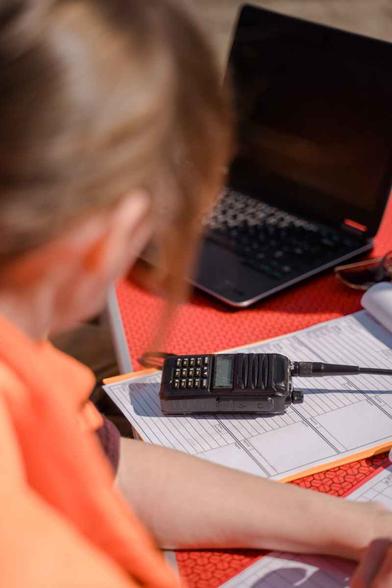
The Essential Role of the Transmitter and Receiver in Amateur Radio: A Comprehensive Guide for Beginners and Enthusiasts
Discover the essential roles of transmitters and receivers in amateur radio and learn how they enable seamless communication. This comprehensive guide covers everything from technical explanations …
Crack the Code: Understanding AM, FM, and SSB for Your Ham License
1,254 words, 7 minutes read time.
If you’re aiming to pass your Technician Class Amateur Radio Exam, understanding modulation techniques is crucial. Whether you’ve been fascinated by the world of amateur radio for years or are just diving into the hobby, learning about amplitude modulation (AM), frequency modulation (FM), and single sideband modulation (SSB) will give you a solid foundation to not only pass your test but also excel as a radio operator.
This comprehensive guide will break down the concept of modulation, demystify the technical jargon, and ensure you’re prepared for any related questions on your Technician Class Exam. In addition to exam preparation, you’ll walk away with practical knowledge that can improve your future experiences as an amateur radio operator.
The Basics of Radio Waves
Before diving into modulation, it’s essential to understand the basic principles of radio waves. Radio waves are a type of electromagnetic radiation that carries information from one point to another. They are characterized by their frequency (how fast the wave oscillates) and wavelength (the physical distance between the peaks of the wave).
The frequency of a wave is measured in Hertz (Hz), and in amateur radio, you’ll commonly encounter kilohertz (kHz), megahertz (MHz), and gigahertz (GHz). The higher the frequency, the shorter the wavelength, and vice versa. This principle forms the foundation of how different modulation techniques work.
What is Modulation?
In its simplest form, modulation is the process of adding information (voice, data, or video) to a radio frequency (RF) carrier wave. Without modulation, all you would have is a continuous, unvarying signal with no meaningful content. Modulation allows you to transmit information from your transmitter to someone else’s receiver.
In the Technician Class exam, you’ll often encounter questions about the different types of modulation, their uses, and their advantages or disadvantages. Let’s break down the most important modulation techniques: AM, FM, and SSB.
Amplitude Modulation (AM)
Amplitude modulation, or AM, is one of the oldest and most straightforward modulation methods. In AM, the amplitude (strength) of the carrier wave is varied in proportion to the information being sent. For example, when you speak into a microphone connected to an AM transmitter, the sound waves from your voice alter the amplitude of the carrier wave.
One of the main advantages of AM is its simplicity. It requires relatively simple equipment to transmit and receive signals, which is why it was widely used in the early days of radio broadcasting. However, AM is susceptible to noise and interference because any electrical noise (such as lightning or electrical equipment) can affect the amplitude of the signal, leading to poor audio quality.
In amateur radio, AM is still used on some bands, especially on the HF (high-frequency) bands where long-distance communication is common. According to the ARRL, “Amplitude modulation is often used for aviation communication, certain emergency services, and some amateur radio transmissions.” You can read more about AM modulation on the ARRL website.
Frequency Modulation (FM)
Frequency modulation, or FM, works by varying the frequency of the carrier wave rather than its amplitude. This method significantly reduces noise and interference, providing clearer audio quality. FM is the standard for commercial radio broadcasting (such as your car radio) and is commonly used on the VHF (very high frequency) and UHF (ultra-high frequency) amateur bands.
One of the reasons FM is so popular in amateur radio is its resilience to signal degradation. Because the information is encoded in the frequency shifts rather than the amplitude, FM signals can better withstand interference. This is why FM is the go-to choice for local communications, such as repeater operation and mobile radios.
A classic example of FM communication in amateur radio is the 2-meter band, where most VHF repeaters operate using FM modulation. The ARRL’s guide on amateur radio frequencies further explains the practical applications of FM modulation in amateur radio (ARRL Frequencies).
Single Sideband Modulation (SSB)
Single sideband modulation, or SSB, is a more advanced form of amplitude modulation. In a traditional AM signal, both a carrier wave and two identical sidebands (upper and lower) are transmitted. This setup consumes a lot of bandwidth and power. SSB eliminates one of the sidebands and the carrier, transmitting only the necessary sideband (upper or lower).
The primary advantage of SSB is its efficiency. By eliminating unnecessary components of the signal, SSB uses less bandwidth and power, allowing for longer-distance communication. This is particularly valuable for long-distance, high-frequency (HF) communications where power conservation and clear signals are essential.
SSB is commonly used in HF voice communication among amateur radio operators, marine radio, and emergency response networks. According to QRZ.com, “SSB is often preferred for voice communications on HF bands because of its ability to conserve power and bandwidth.” You can explore QRZ’s resources on SSB here.
Comparing AM, FM, and SSB
Understanding the differences between AM, FM, and SSB is crucial for your Technician Class Exam. Here’s a brief comparison to solidify your understanding:
- AM is simple but prone to noise and interference. It is still used in some amateur and aviation communications.
- FM provides clear audio quality and is widely used for local communications on VHF and UHF bands.
- SSB is highly efficient, conserving bandwidth and power, making it ideal for long-distance HF communication.
Each modulation technique has its place in amateur radio, and understanding when and why to use each one will make you a more competent and confident operator.
ARRL Ham Radio License Manual 5th Edition – Complete Study Guide with Question Pool to Pass the Technician Class Amateur Radio ExamPreparing for the Technician Class Exam
The Technician Class Exam will include questions on all three modulation types. You may encounter questions like:
- Which modulation technique is most commonly used for local VHF communication?
- Why is SSB preferred over AM for long-distance HF communication?
- How does FM reduce noise interference compared to AM?
Using resources like the ARRL Question Pool or HamStudy.org will help you practice these questions and ensure you’re ready for the exam.
Practical Tips for Amateur Radio Operators
Once you pass your Technician Class Exam, you’ll quickly realize that understanding modulation isn’t just about passing a test — it’s about becoming an effective radio operator. Here are a few practical tips:
- Start by using FM on local repeaters to get comfortable with VHF/UHF communication.
- Experiment with SSB on HF bands for long-distance contacts.
- Listen to AM broadcasts or use AM on the HF bands to understand its characteristics.
As you grow in your amateur radio journey, you’ll find that understanding modulation techniques will open doors to more advanced operating modes, experimentation, and worldwide communication.
Conclusion
Mastering AM, FM, and SSB modulation techniques is not only essential for passing your Technician Class Exam but also critical for becoming a proficient amateur radio operator. Each modulation type has its strengths and practical applications, and understanding them will make you a more knowledgeable and capable operator.
For more in-depth study resources, visit the ARRL website or QRZ.com. With the right preparation and knowledge, you’ll be on your way to earning your Technician Class license and joining the amazing world of amateur radio.
D. Bryan King
Sources
- ARRL: Getting Licensed
- ARRL: Technician Class Question Pool
- HamStudy: Technician Question Pool
- eHam: Practice Amateur Radio Exams
- QRZ: Ham Radio Practice Tests
- Ham Radio License Exam
- Ham Radio Prep
- Ham Radio License Exam Study Guide
- ARRL: What is Ham Radio?
- ARRL: Amateur Radio Frequencies
Disclaimer:
The views and opinions expressed in this post are solely those of the author. The information provided is based on personal research, experience, and understanding of the subject matter at the time of writing. Readers should consult relevant experts or authorities for specific guidance related to their unique situations.
Related Posts
Rate this:
#aceHamRadioExam #amExplained #amModulation #amVsFm #amVsSsb #AmateurRadio #amateurRadioBeginner #amateurRadioFrequency #amateurRadioKnowledge #amateurRadioLicense #amateurRadioOperations #amateurRadioTest #amplitudeModulation #beginnerSGuideHamRadio #examPrepHamRadio #fmExplained #fmModulation #fmVsSsb #frequencyModulation #hamExamQuestions #hamLicenseTestQuestions #hamRadio #hamRadioBeginner #HamRadioCertification #hamRadioCourse #hamRadioFrequencies #hamRadioGuide #hamRadioLicense #HamRadioOperators #HamRadioStudyGuide #HamRadioTest #HamRadioTraining #hamRadioTutorial #howToPassHamRadioExam #learnHamRadio #modulationDefinitions #modulationExplained #modulationTechniques #modulationTechniquesExplained #modulationTheory #modulationTypesHamRadio #passHamRadioTest #passingTechnicianExam #radioCommunication #radioCommunicationExam #radioCommunicationTechniques #radioFrequencies #radioModulationTypes #radioTransmission #radioWaveProperties #radioWaves #singleSideband #ssbExplained #ssbModulation #TechnicianExam #TechnicianExamTips #technicianLicenseGuide #understandingModulation #understandingRadioWaves
Basic Electronics for the Amateur Radio Operator: What You Need to Know for Your Technician License
1,003 words, 5 minutes read time.
If you’re preparing for the Amateur Radio Technician License Exam, understanding basic electronics is a must. While you don’t need to be an electrical engineer, the exam includes fundamental concepts like Ohm’s Law, circuits, components, and RF safety. This guide will walk you through the essential topics, ensuring you’re ready for the test and your first steps as a ham radio operator.
Understanding Electricity: The Basics for Amateur Radio
Electricity is the movement of electrons through a conductor, like a wire. Three key electrical properties define how electricity behaves:
- Voltage (V) is the force that pushes electrons through a circuit. It’s measured in volts (V).
- Current (I) is the flow of electrons, measured in amperes (A).
- Resistance (R) opposes the flow of electricity and is measured in ohms (Ω).
These three are tied together by Ohm’s Law, a fundamental equation in electronics:
V=I×R
This means if you know any two values, you can calculate the third. Understanding this equation is critical for both the exam and real-world troubleshooting.
Direct Current (DC) vs. Alternating Current (AC)
Electricity comes in two forms:
- Direct Current (DC) flows in one direction. Batteries and solar panels produce DC.
- Alternating Current (AC) changes direction many times per second. Household electricity is AC because it’s more efficient for transmission over long distances.
For amateur radio, most equipment runs on DC power, but you’ll also need to understand AC because radio signals are alternating currents that oscillate at high frequencies.
Essential Electronic Components and Their Functions
Several key electronic components appear on the Technician Exam. Here’s what they do:
- Resistors limit current flow.
- Capacitors store and release energy, often used in filtering circuits.
- Inductors store energy in magnetic fields and are important in tuning circuits.
- Diodes allow current to flow in only one direction, useful in rectifier circuits that convert AC to DC.
- Transistors act as switches and amplifiers in radio circuits.
Understanding these basics helps you answer questions about circuit behavior and troubleshooting.
Series and Parallel Circuits
Circuits are made up of components arranged in either series or parallel:
- In a series circuit, current flows through all components one after another. The same current passes through each, but the voltage is divided.
- In a parallel circuit, components share the same voltage, but the current divides among them.
For the exam, you should know how voltage, current, and resistance behave in each type of circuit. For example, total resistance in a series circuit is the sum of all resistances, while in parallel circuits, total resistance is lower than the smallest individual resistor.
Basic AC Concepts and Frequency
Radio waves are AC signals that oscillate at different frequencies. Frequency (f) is measured in hertz (Hz) and tells us how many times per second the wave changes direction. One kilohertz (kHz) is 1,000 Hz, and one megahertz (MHz) is 1,000,000 Hz.
Ham radios operate in different frequency bands, such as:
- VHF (Very High Frequency): 30 MHz – 300 MHz (e.g., 2-meter band)
- UHF (Ultra High Frequency): 300 MHz – 3 GHz (e.g., 70-centimeter band)
Higher frequencies allow for shorter antennas and are good for local communication, while lower frequencies travel further.
Modulation: How We Send Information Over Radio Waves
Modulation is how a radio wave (carrier wave) carries information. The Technician Exam covers three main types:
- Amplitude Modulation (AM): The signal strength (amplitude) changes with the voice signal.
- Frequency Modulation (FM): The frequency of the wave changes to encode information. FM is more resistant to noise and is commonly used in VHF and UHF bands.
- Single Sideband (SSB): A variation of AM that uses less bandwidth and is more efficient for long-distance communication.
Knowing these helps when selecting modes for different types of contacts.
Power, Batteries, and Safety
Most ham radios run on 12V DC power sources, such as batteries or regulated power supplies. It’s important to understand:
- Battery safety: Overcharging or short-circuiting batteries (especially lithium-ion) can be dangerous.
- Fuse protection: Many radios have built-in fuses to prevent excessive current draw.
Another key topic on the test is RF exposure safety. High-power transmissions can generate strong radio frequency (RF) radiation, which may cause health risks. To minimize exposure:
- Maintain a safe distance from transmitting antennas.
- Use the lowest power necessary for effective communication.
- Follow FCC RF exposure limits for your frequency and power level.
Ohm’s Law in Real-World Ham Radio Applications
A common exam question might involve calculating current or voltage using Ohm’s Law. For example:
Question: If a radio operates at 12V and draws 2A of current, what is the resistance?
Using Ohm’s Law:
Understanding these calculations can help with troubleshooting and designing circuits.
Final Thoughts: Studying for the Exam and Beyond
The Technician License Exam covers these topics, but learning electronics doesn’t stop there. Once licensed, you’ll continue exploring concepts like antenna design, signal propagation, and digital communication.
Great resources for studying include:
- ARRL’s Technician Class License Manual: The official guide with explanations and practice questions.
- HamStudy.org: Free practice tests and flashcards.
- QRZ.com Practice Exams: Simulated tests with real exam questions.
By mastering these basic electronics concepts, you’ll be well on your way to passing the exam and starting your journey in amateur radio. Keep practicing, get hands-on experience, and soon, you’ll be making contacts on the air!
D. Bryan King
Sources
- American Radio Relay League (ARRL) – Official Site
- FCC Amateur Radio Service – Licensing and Regulations
- QRZ.com – Amateur Radio Callsign Database
- HamStudy.org – Exam Prep and Study Tools
- Electronics Tutorials – Basic Circuit Theory
- RadioReference.com – Frequency Database and Scanner Information
- AMSAT – Amateur Radio Satellites and Space Communications
- DX Engineering – Ham Radio Equipment and Resources
- MikroE Learn – Electronics and Circuit Design Tutorials
- Radio Society of Great Britain (RSGB) – Ham Radio Resources
- Arduino – Microcontrollers and DIY Electronics for Ham Radio
- eHam.net – Amateur Radio News, Reviews, and Forums
Disclaimer:
The views and opinions expressed in this post are solely those of the author. The information provided is based on personal research, experience, and understanding of the subject matter at the time of writing. Readers should consult relevant experts or authorities for specific guidance related to their unique situations.
Related Posts
Rate this:
#ACVsDC #am #AmateurRadio #amateurRadioEducation #amateurRadioTraining #antennaTheory #ARRLStudyGuide #basicElectronics #beginnerHamRadio #capacitors #circuits #current #diodes #electricalComponents #electronicsBasics #examPrep #FCCExam #FM #hamExam #hamLicense #hamOperator #hamRadio #hamRadioBands #hamRadioBeginner #hamRadioComponents #hamRadioEquipment #hamRadioOperator #hamRadioStudy #HamRadioStudyGuide #HamRadioTraining #hamStudyGuide #inductors #modulation #OhmSLaw #powerSupply #radioBroadcasting #radioCommunication #radioFrequencies #radioFrequency #radioFundamentals #RadioLicensing #radioSignals #RadioTechnology #radioTransmission #radioWaves #resistance #resistors #RFExposure #RFSafety #SSB #technicianClass #TechnicianLicense #transistors #UHF #VHF #voltage
Understanding the Metric System in Amateur Radio: A Comprehensive Guide for Success
1,426 words, 8 minutes read time.
The metric system is one of the most universally used systems of measurement, and it’s crucial for success in amateur radio. From frequencies to power ratings, resistance, and voltage, the metric system provides a standardized framework for understanding and communicating technical data. For those preparing for the Amateur Radio Technician exam, mastering the metric system is essential to navigating the test with confidence and accuracy. This guide will explain the importance of the metric system in amateur radio, its relevance to the exam, and offer tips and tricks to help you succeed.
The Metric System and Amateur Radio: Why It Matters
In the world of amateur radio, the metric system plays a fundamental role in creating a consistent, universal language for communication. The metric system, or International System of Units (SI), is used worldwide, except in the United States, Myanmar, and Liberia. This system simplifies the process of sharing technical information across borders, ensuring that radio operators in different countries can understand one another’s measurements without confusion.
Whether you’re measuring frequency, power, voltage, or resistance, the metric system provides clear, standardized units for all these parameters. It helps create a foundation for understanding complex radio concepts, such as signal propagation, radio wave behavior, and power calculations. As the most widely used system for scientific and technical applications, it’s indispensable for anyone interested in becoming an amateur radio operator.
For example, frequency in amateur radio is measured in hertz (Hz), and its multiples are expressed in kilohertz (kHz) or megahertz (MHz). Similarly, power is measured in watts (W), with milliwatts (mW) and kilowatts (kW) as commonly used multiples. Resistance is measured in ohms (Ω), with kiloohms (kΩ) and milliohms (mΩ) as commonly used units for different levels of resistance. Voltage is measured in volts (V), with common multiples being millivolts (mV) and kilovolts (kV).
The Role of the Metric System in the Amateur Radio Technician Exam
The Technician Class license exam for amateur radio requires knowledge of the metric system because it is directly related to various technical questions about frequency, power, voltage, resistance, and more. The exam is structured with 35 multiple-choice questions, covering a wide range of topics including basic electronics, radio wave propagation, safety, and regulations. Understanding the metric system is crucial for answering questions related to these concepts.
One of the challenges that exam-takers face is converting between different units within the metric system. For instance, you may be asked to convert a frequency value from kilohertz (kHz) to megahertz (MHz), or convert milliwatts (mW) into watts (W). Having a solid grasp of the metric system and how to make these conversions is key to answering these types of questions correctly.
In the context of amateur radio, conversions often come up when you’re working with different power levels or adjusting to varying frequency bands. The ability to convert seamlessly between units can help you save time and avoid making mistakes during the exam. That’s why it’s essential to know the common prefixes used in the metric system, like milli (m), kilo (k), and mega (M), and their corresponding values.
Understanding Metric Units and Prefixes
To fully comprehend the metric system in amateur radio, you must first understand the most common units and their prefixes. These prefixes are used to represent different scales of measurement. Here are some of the most important prefixes and their values:
- Milli (m) = 0.001 or 10^-3
- Centi (c) = 0.01 or 10^-2
- Deci (d) = 0.1 or 10^-1
- Kilo (k) = 1,000 or 10^3
- Mega (M) = 1,000,000 or 10^6
These prefixes are applied to various units such as watts, volts, ohms, and hertz, and they help simplify calculations. For instance, you might encounter a situation where you need to convert a signal’s power from milliwatts (mW) to watts (W). To convert from milliwatts to watts, you would divide by 1,000. So, if you have 500 mW, you would divide by 1,000 to get 0.5 W.
Additionally, when working with frequencies, you might need to convert between kilohertz and megahertz. If a radio signal’s frequency is given in kilohertz, but the question asks you to provide the value in megahertz, you can divide the frequency by 1,000. For example, 2,500 kHz is equivalent to 2.5 MHz.
Metric System Practice for the Technician Exam
To perform well on the Technician Class exam, it’s vital to practice working with the metric system. Start by memorizing the common prefixes and their corresponding values. After you’ve committed these to memory, practice applying them to different types of radio-related problems.
One of the most effective ways to practice is by using sample questions from previous exams. These questions often cover the key concepts you need to know, such as frequency conversions, power calculations, and understanding units of voltage and resistance. By solving practice problems, you’ll develop a deeper understanding of the metric system and become more comfortable making conversions under pressure.
You can find numerous online resources that provide practice questions and detailed solutions, such as websites and apps designed specifically for amateur radio exam preparation. These resources will help you hone your skills and identify areas where you need more practice.
Test Tips and Tricks for Metric System Success
Here are a few test-taking strategies to help you succeed in the Technician Class exam when dealing with metric system questions:
- Memorize Key Metric Prefixes: The metric system relies heavily on prefixes like milli, kilo, and mega. Make sure you commit these prefixes to memory, as they will appear frequently in exam questions. Understanding these conversions will be essential for quick and accurate answers.
- Practice Unit Conversions: While the concept may seem simple, unit conversions can trip up even experienced radio operators. Practice converting units between milliwatts and watts, kilohertz and megahertz, and so on. Familiarity with these conversions will save you valuable time during the exam.
- Use Mnemonics: Mnemonics are a great way to remember the prefixes and their values. For instance, you could use a simple phrase like “King Henry Died By Drinking Chocolate Milk” to remember the order of prefixes (kilo, hecto, deka, base unit, deci, centi, milli). Finding your own creative mnemonic can make learning more enjoyable.
- Don’t Overthink It: During the exam, it’s easy to second-guess yourself when it comes to conversions. If you know the formula and the units, don’t waste time doubting your answer. Take a deep breath, stick with what you know, and move forward.
- Time Management: The Technician exam has a time limit, so don’t get bogged down on any one question. If you’re stuck on a question about the metric system, skip it and come back to it later. Answer the questions you know first, then focus on the more challenging ones.
Common Mistakes to Avoid
When working with the metric system in amateur radio, there are a few common pitfalls to be aware of:
- Confusing Similar Prefixes: It’s easy to mix up similar prefixes like milli (m) and mega (M). Remember that milli is 0.001, and mega is 1,000,000. A mistake in identifying these prefixes can lead to huge errors in calculations.
- Misplacing Decimal Points: Decimal point errors are common when converting between units. Be careful with your decimal places, as a single misplaced decimal can cause a significant error in your answer.
- Ignoring Units of Measurement: Always double-check that your units match when performing calculations. Mixing units, such as milliwatts and watts, can lead to confusion and incorrect results.
Conclusion
The metric system is a crucial aspect of amateur radio, and understanding it is essential for success in the Technician Class exam. By learning the common prefixes, practicing unit conversions, and using effective test-taking strategies, you’ll be well-prepared for the exam and confident in your ability to apply these concepts in real-world radio operations.
For anyone aiming to pass the Technician Class exam, dedicating time to mastering the metric system will make a significant difference in your performance. As with any subject, practice is key, and by utilizing available resources and committing the important concepts to memory, you’ll be ready to tackle the exam with ease.
With the right preparation and understanding of the metric system, you’ll not only pass the exam but also gain valuable knowledge that will serve you well as you embark on your journey as an amateur radio operator.
D. Bryan King
Sources
- ARRL – Think Metric
- MDARC – Metric System in Amateur Radio
- Mometrix – Ham Radio Technician Class Exam Information
- K0NR – Common Mistakes When Using Metric Units
- Copasetic Flow – Converting Metric Units for Ham Radio Exam
- Ham Radio Prep – Technician Class Practice Test
- Fox Radio – Technician Exam Study Guide
- ARRL – Amateur Radio Licenses Overview
- Ham Test Online – Practice Exams for Technician Class
- QRZ.com – Online Resources for Amateur Radio
Disclaimer:
The views and opinions expressed in this post are solely those of the author. The information provided is based on personal research, experience, and understanding of the subject matter at the time of writing. Readers should consult relevant experts or authorities for specific guidance related to their unique situations.
Related Posts
Rate this:
#AmateurRadio #amateurRadioKnowledge #amateurRadioStudy #conversionTips #examPrep #examSuccess #examSuccessTips #frequencyConversions #hamOperator #hamRadio #hamRadioLicense #hamRadioPreparation #hamRadioTips #hertz #kilo #kilohertz #mega #megahertz #metricConversions #metricPrefixes #metricSystem #metricUnits #milliwatts #ohms #powerCalculations #powerRatings #radioCommunication #radioEquipment #radioExamGuide #radioExamQuestions #radioExamTips #radioFrequency #radioHobby #radioKnowledge #RadioLicensing #radioMeasurementUnits #radioOperator #radioSafety #radioTechnician #radioTests #radioTraining #radioWaves #resistance #SIUnits #technicalKnowledge #TechnicianClassExam #TechnicianExamPractice #testStudyGuide #testTakingStrategies #voltage #volts #watts
Holy crap! That's 173,8 km (Brighton UK to Normandy France) on 500 milliWatts #PMR446 handhelds
Whatever protocol it might be, DCS and CTCSS tones are nothing more than basic anti-spam. NOT a privacy thing.
It's just "Don't open the squelch when radio signal is received unless it has the expected tone"
Anyone with anykind of receiver, without CTCSS/DCS tones support OR with these tones disabled will still be able to hear the transmission. I fail to see why so many people fall for the "privacy code" marketing bullshit.
It's not meant for private communications…
Me when random people pretend CTCSS and DCS tones are "privacy codes", "help you to have a bit of privacy" or are "subchannels to help you when you have a crowded channel", or even "channels"
No, there are neither and there is no such thing as "subchannels". They have nothing to do with "privacy". 1 frequency = 1 and only 1 channel…
On #PMR446, there "only" 16 channels (8 channels on pre-2018-06 devices). Which in MOST cases, is plenty enough
From Peter Vogel:
"This major communications site in Los Angeles, Saddle Peak, has been overrun and surrounded with one of the many large fires arising from the Santa Ana Winds. Whether the facilities have survived is unknown.
https://peakery.com/saddle-peak-east-california/
I was compelled to make this post while watching the amazing coverage on LA TV station KTLA."

